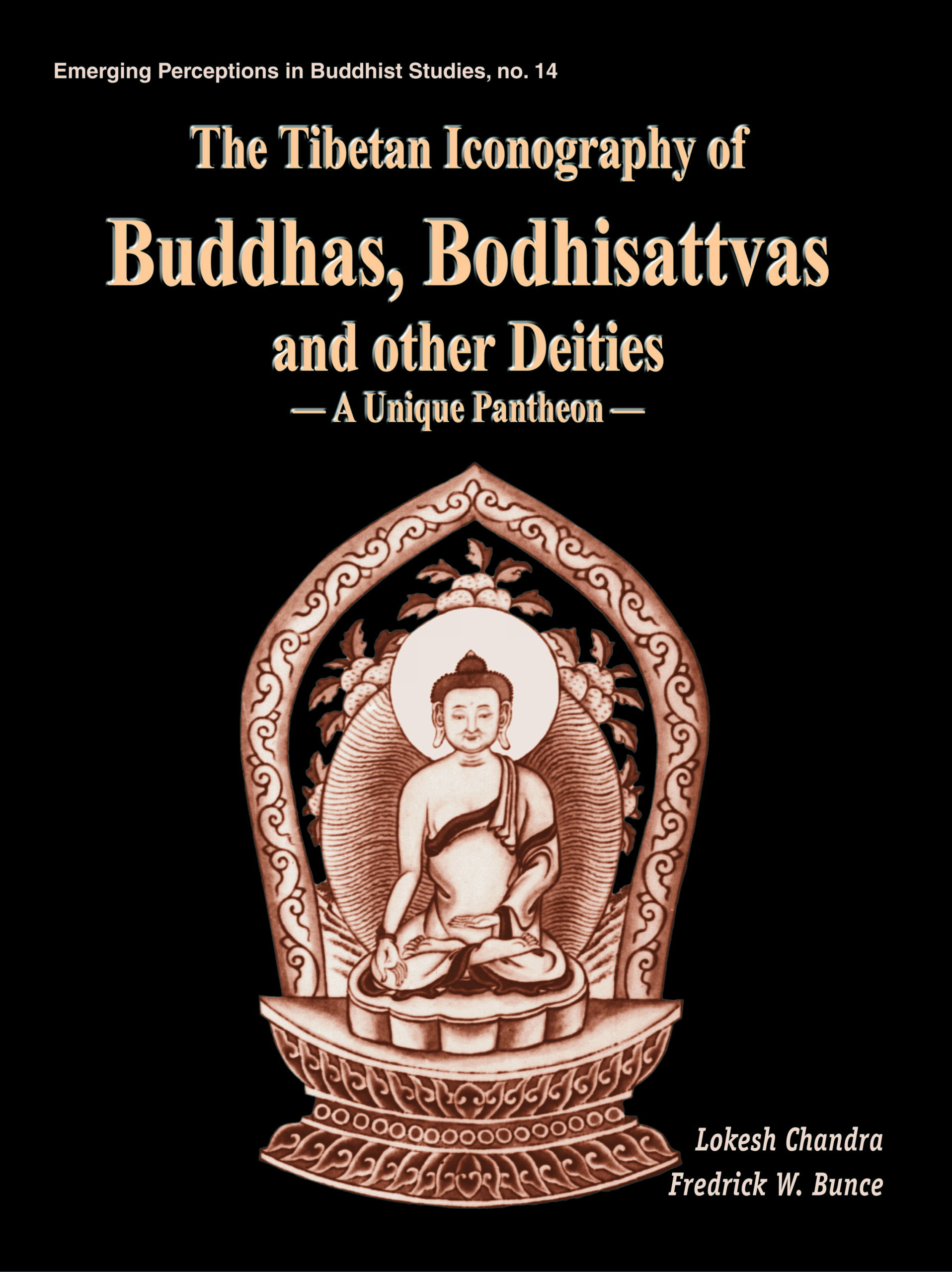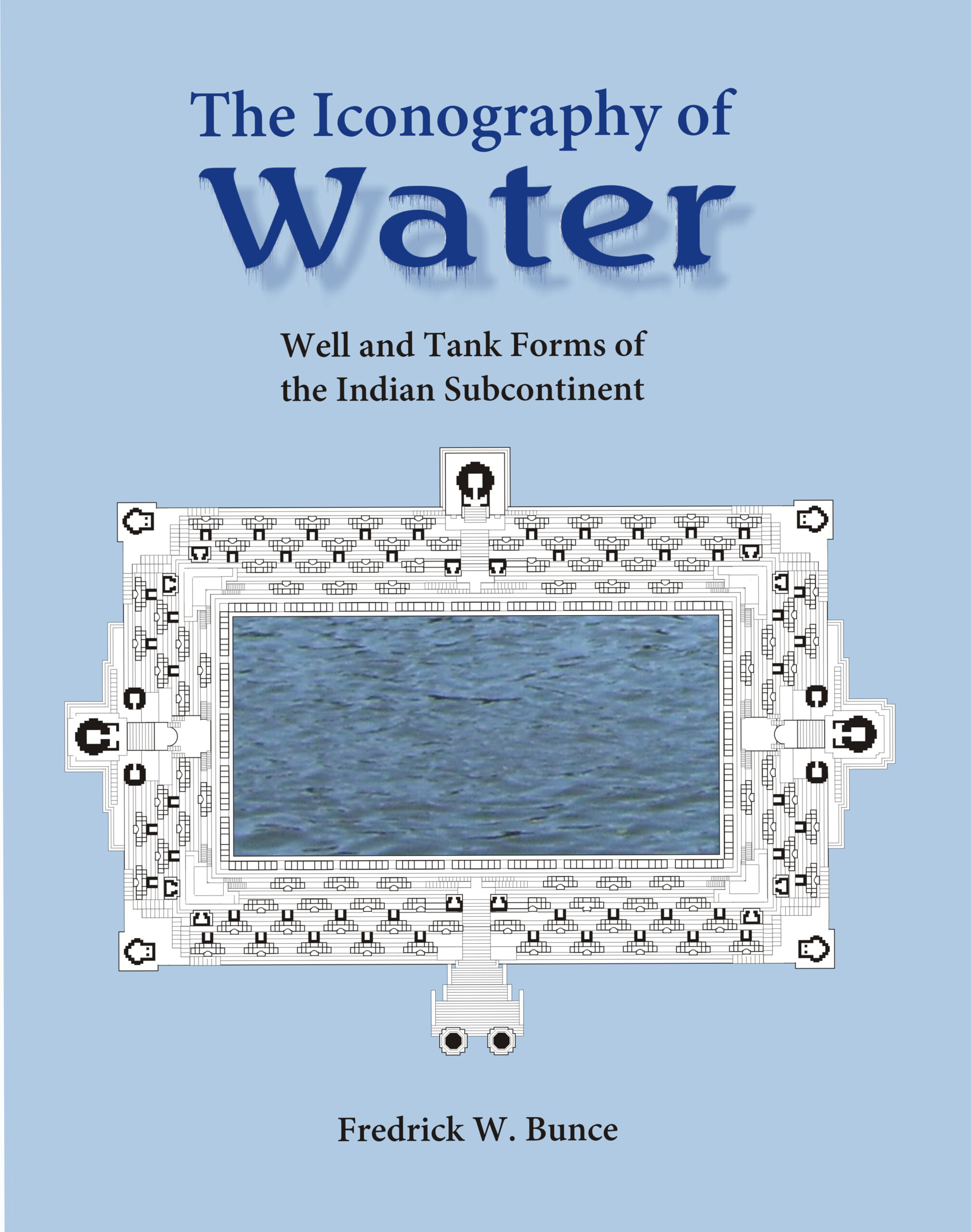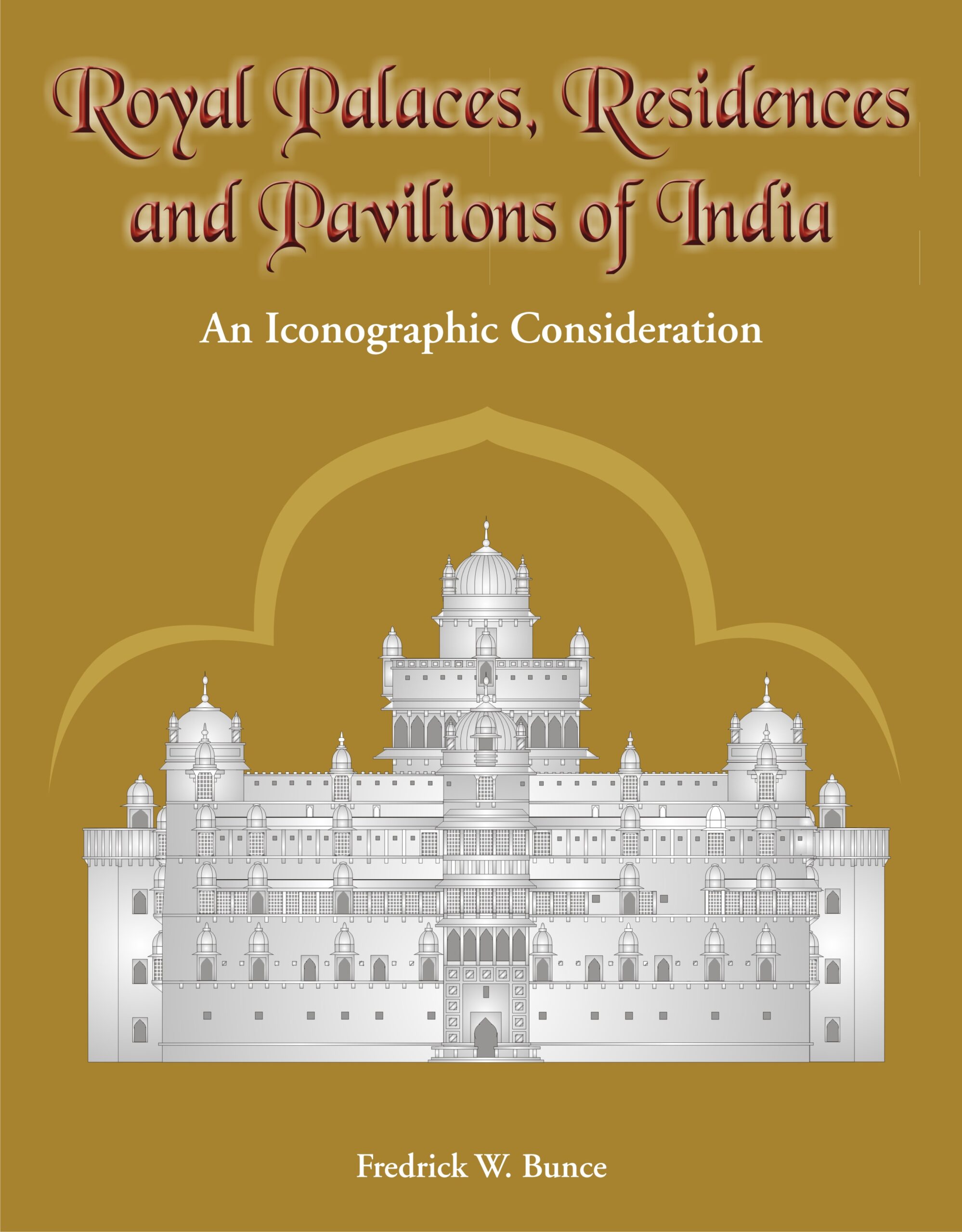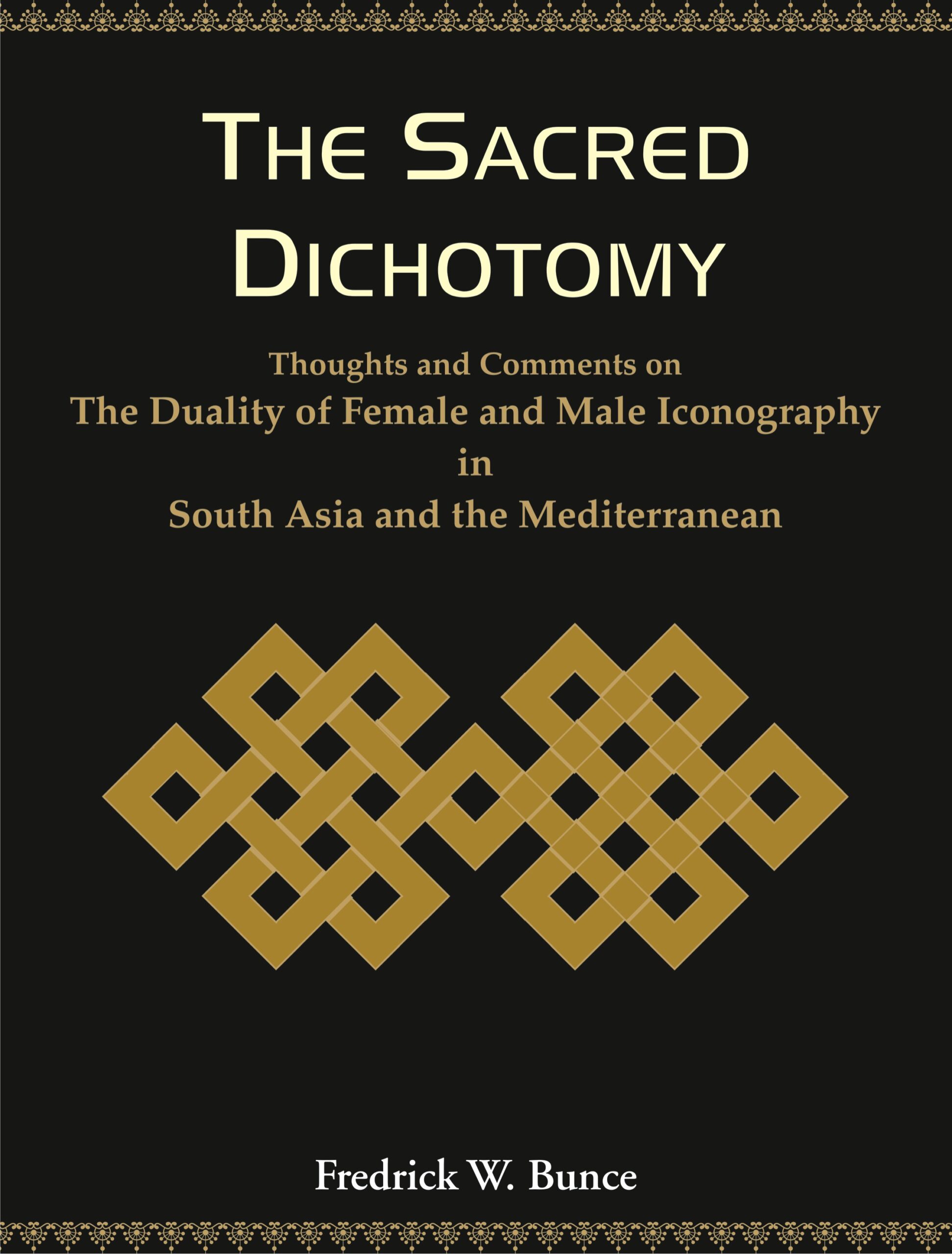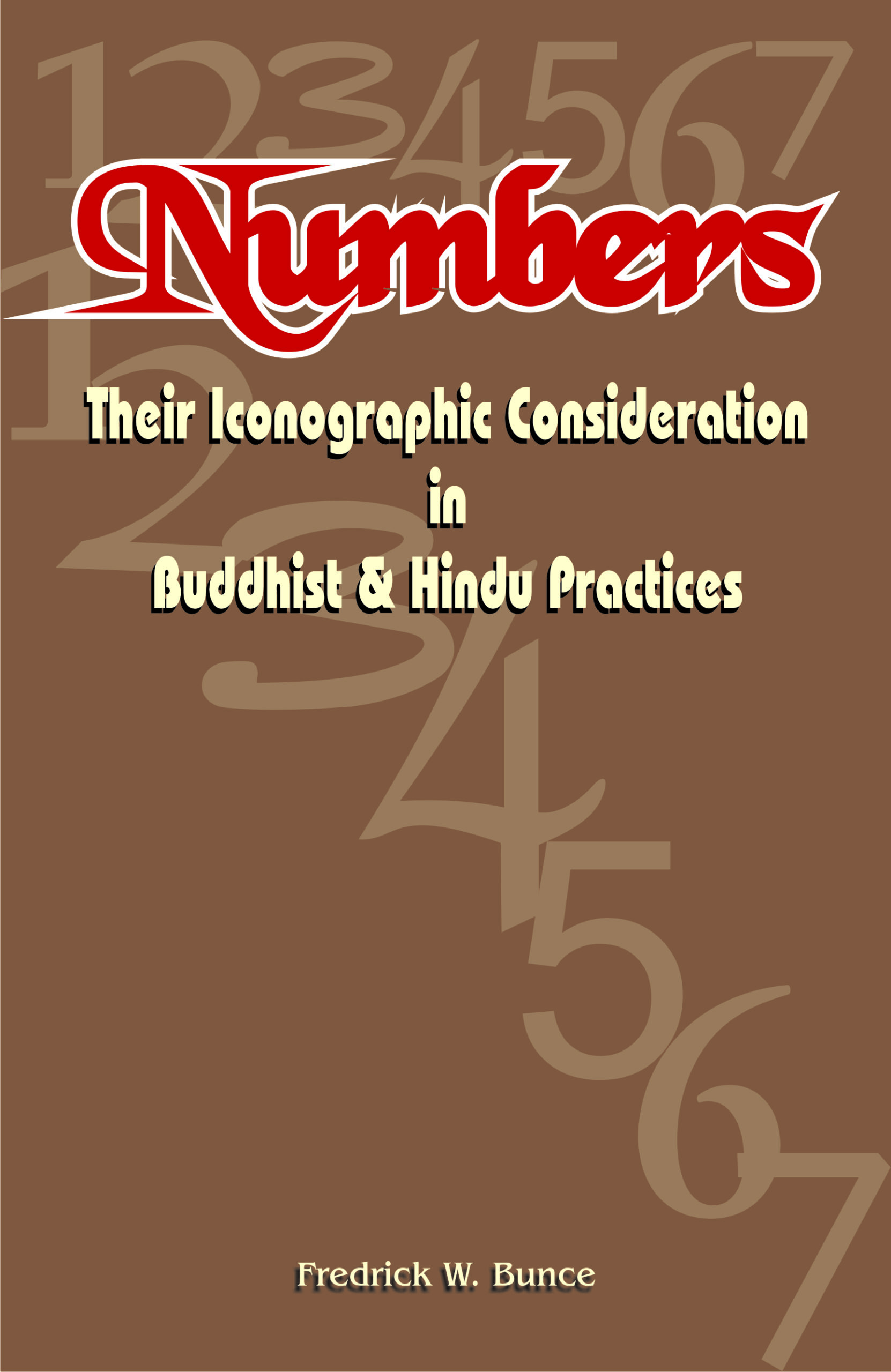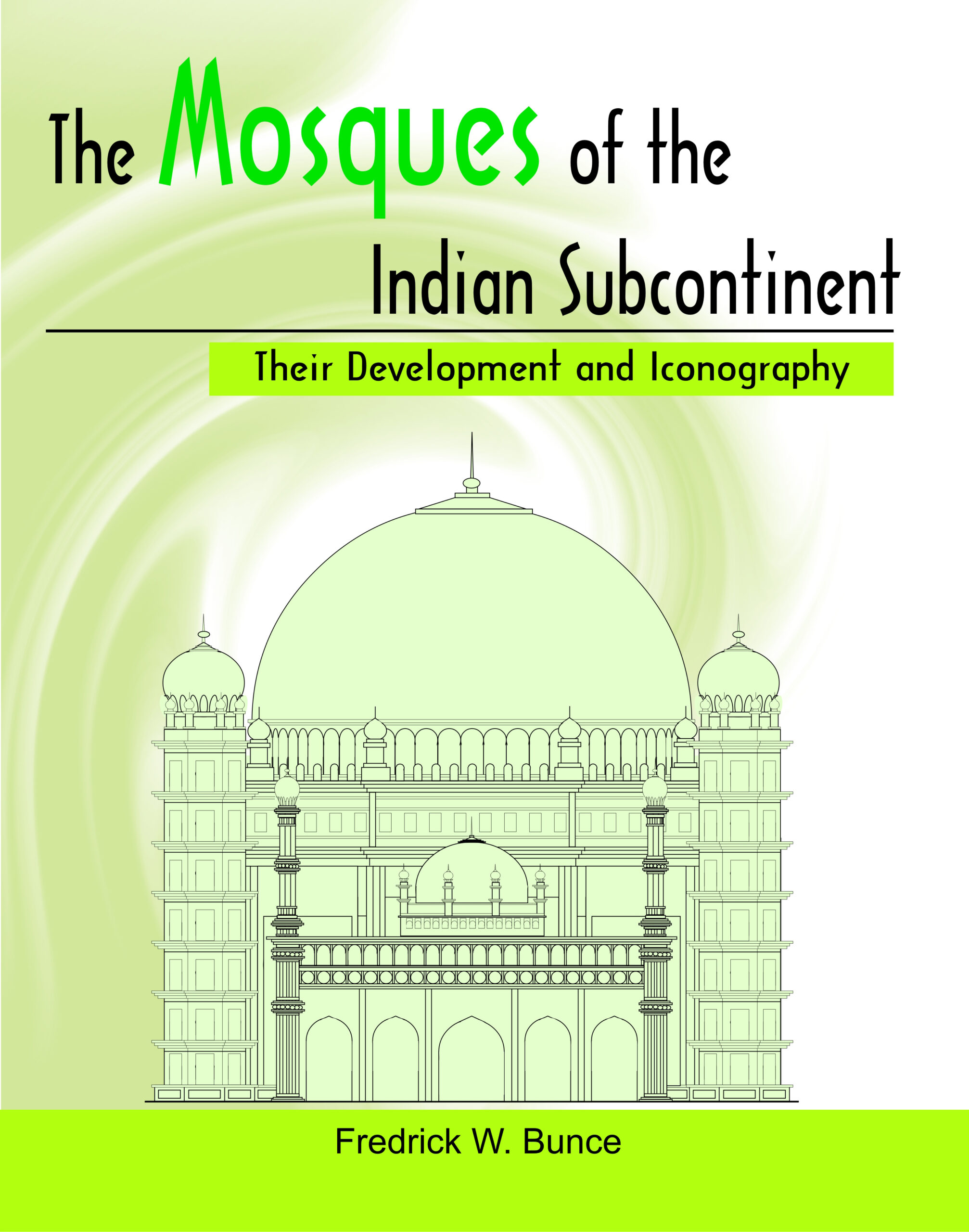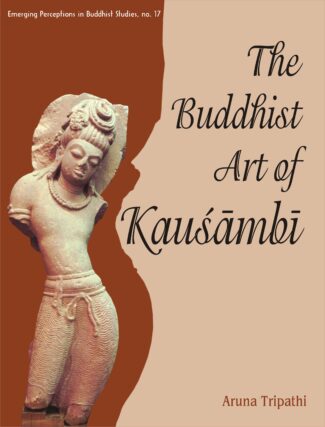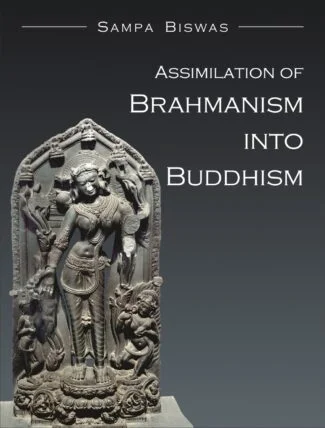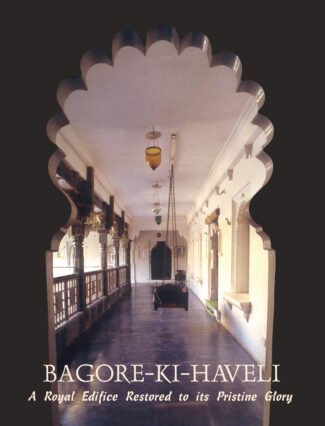

Iconography of Archi...
Iconography of Architectural Plans
A study of the Influence of Buddhism and Hinduism on Plans of South and Southeast Asia by: Fredrick W. BunceWith surveys of diverse Buddhic and Hindic temples in India, Sri Lanka, Indonesia, Myanmar, Thailand, Vietnam, and even Malaysia, the book shows how the basic element in their architecture: the PLAN was fraught with iconographic import and input, necessitating the guidance of authoritative compendia, the arcane knowledge of the sthapati (priest-architect), and other complex procedures steeped in symbolism.
Original price was: ₹4,000.00.₹3,600.00Current price is: ₹3,600.00.
ISBN: 9788124602003
Year Of Publication: 2018
Edition: 2nd
Pages : xxviii, 563
Bibliographic Details : 176 Plates; 224 Figures; Glossary; Appendices; Bibliography; Index
Language : English
Binding : Hardcover
Publisher: D.K. Printworld Pvt. Ltd.
Size: 29 cm.
Weight: 2200
Over the rolling centuries, Buddhism and Hinduism, two of the worlds oldest sustained faiths, came to evolve a complex, yet precisely defining, iconic language: not just for figural representations, but for the architectural plans of their temples and monuments as well a language that allows interpretations of geometric proportions. Here is the first ever effort to brilliantly unravel the iconic idiom involved in the architectural plans of Buddhist and Hindu temples and monuments of India and the Indianized States of Southeast Asia. With his indepth surveys of diverse Buddhic and Hindic temples in India, Sri Lanka, Java (Indonesia), Kambuja, Myanmar, Thailand, Vietnam, and even Malaysia, the author shows how the basic element in their architecture: the PLAN conceived within a cosmological framework was fraught with iconographic import and input, necessitating the guidance of authoritative compendia, like the Manasara and the Mayamata, the arcane knowledge of the sthapati (priest-architect), and many other complex procedures which all were steeped in symbolism. In analysing the architectural plans of these temples, Professor Bunce also highlights the various related iconographic considerations, like orientation, basic geometric forms, construction methods, rules and ratios, the non-congregational necessity, the high place as a consideration as well as the cave besides a number of viable influences which exert various amounts of control, e.g., textual, philosophic/theologic, numerological, astrological/astronomical, regionality and, most importantly, the mandala. Generously supported by visual material comprising as many as 400 figures and line-drawings, Professor Bunces book is veritably a monumental, off-beat exercise of enormous interest to iconographers as well as the historians/specialists of South and Southeast Asian temple architecture.
Preface
List of Plates
List of Figures
Abbreviations
Introduction — Architectural Iconography
The Basis of Form:
Philosophic and Theological Foundations
Numerology
Astrology/Astronomy
Additional Iconic Concerns:
The Mandala:
1. Architectural Iconography
Iconography
2. The Basis of Form
Orientation
Basic Geometric Forms
Axiality
Cross-Axiality
Construction Methods and Materials
Rations, Relationship and Rules
3. Philosophic & Theological Foundations
4. Numerology
5. Astrology and Astronomy
6. Additional Iconic Considerations
Non-Congregational
The High Place
The Cave
The Stupa
7. The Mandala
Magic Squares (Mandalas)
Vastu-Purusha Mandala
Manduka Mandala
Paramashayika Mandala
Circular Mandala
Vajrayana Mandala
Vajradhatu Mandala
Stupa Symbolism and Numerology
Gyanste Kumbum
Garbha-Griha Plan
Ancillary Shrine Plan
Temple Plan
8. India and Sri Lanka
Stupa I, Sanchi, India II C. BCE (MB, HS, JL)
Thuparama Dagoba, Anuradhapura, Sri Lanka III C. BCE (AG)
Ruvanveliseya Dagoba I-II C. BCE (AG)
Chaitya Hall, Karli, India I C. BCE (MB, HS)
Buddhist Cave-Monastery #2, Ajanta, India II C. BCE (HS, MB, JL)
Ladh Khan, Aihole, India, 450 CE (HS, MB)
Durga Temple, Aihole, India, 500 CE (HS, MB)
Shiva Temple, Indor, Madhya Pradesh, (c. 775 CE) (KD)
Subrahmanya Temple, Manjeri, Kerala, c.10 C. CE
Kilatali Shiva Temple, Thiruvanchikula, Kerala, c. 10 C. CE
Vatadage, Polonnaruwa, Sri Lanka, 11-12 C. CE (JA)
Tivanka Pilimage (Lankatilaka), Polonnaruwa, Sri Lanka, 12 C. CE (JA)
Brahmeshvara Temple, Bhuvaneshvar, Orissa, 1075 CE (HS, MB)
Keshava Temple, Somnathpur, India, 1268 CE (HS)
Garden Pavilion, Kotilal Fort, Delhi, 14 C. CE (HS)
9. Indonesia (Java)
Borobudur, Java, c. 760-830 CE
Chandi Lumbung, Prambanan, a. 782 CE (JF, AP)
Chandi Sewu, Prambanan, Java, a. 79214 CE (JF, JA, PR, AP)
Loro Jonggrang, Prambanan, Java, c, 85622 CE (JF, JA, AP, MB)
Chandi Sari, Prambanan, Java 9 C, CE (JF, JA, AP, MB, PR)
Chandi Djago, Malang, c. 1270-1280 CE (JF, JA, PR)
Chandi Panataran Sanctuary Blitat (Kediri), Java, 1320-1370 CE (PR, MB, Jf, Ja)
10. Kambuja (Cambodia) The Khmer
Preah Ko, Roluos, a. 879 CE (JB, Bg, JD, JDII)
Bakong, Roluos, a. 881 CE (BG, PR, MB, Ja, JD, JDII)
Bakheng (Mount Ensemble), Angkor (Yasodharapura), a. 893 CE (BG, JA, JD, JDII)
Ta Keo, Angkor, c. 975-1050 CE (JB, MB, JD, JDII)
Phimai Temple (Prasat Hin Phimai), Khorat, Thailand, 11 C. CE (JB, MB, JD, JDII)
Banteay Samre Temple, Angkor, a. 1050 CE (JB, MB)
Baphuon, Angkor, 1050-1066 CE (JB, MB, BG, PR, JF)
Angkor Wat, Angkor, 1113-1150 CE (JB, PR, MB, JD, JDII)
Bayon, Angkor Thom, Angkor, c. 1200 CE (MB, BG, JA, JD, JDII, PR)
11. Myanmar (Burma)
Nat-Hlaung-Kyaung Pagan, c. 931-964 CE(PS)
Nan-Hpaya Pagan, c. 1044-1077 (JA, PS)
Myin-Pya-Gu Pagan, 1077-1084 CE (PS)
Shwe-Zigon Pagoda Pagan, a. 1084 & b. 1103 CE (PS)
Naga-Yon Pagan, c. 1090 CE (PS)
Ananda Temple Pagan, a. 1105 CE15 (PS)
That-Byin-Nyu Pagan, b. 1165 CE (PS)
Dhamma-Yan-Gyi Pagan, b. 1165 CE (PS)
Gawdaw-Palin Pagan, 13 C. CE (PS, PR, JDII)
Myinkaba Kubyauk-Nge Pagan, c. 1225 (PS)
Bogyoke-Mi Kubyauk Pagan, c. 1170-1270 CE (PS)
Dhamma-Yazika Pagan, 1196 CE (PS)
Mingala-zeidi Pagan, 1274-1284 (JD, MB)
Pentagonal Temple (Pancha-Buddhas), Pagan, a. 1175 CE (JD II)
Paya-Thon-Zu Pagan, a. 1250 CE (PS)
12. Thailand (Lanna Tai, Sukhothai, Ayutthaya & Rattanakosin)
Chedi Wat Kukut (Wat Chamatewi) Lamphun, 1218 CE (MB, JA, SV)
Chedi Wat Chang Lom, Si Satchanalai, c. 1275-1300 CE12 (SV)
Wat Phra Chao Phanan Choeng Ayutthaya, 1324 CE (SL, CA, SV)
Wat Mahathat Sukhothai, 1345 CE (SV, CM)
Wat Phra Si Rattana Mahathat Ayutthaya, a. 1370 CE25 (DR, CA, SV, JB I, PR, SL)
Wat Phra Ram Ayutthaya, 1369 CE32 (SL)
Wat Ratchaburana (Wat Ratburana) Ayutthaya, 1424 CE35 (SL)
Wat Chedi Chet Yot (Wat Mahabodharama) Chiang Mai, c. 1455 CE (JA, SV)
Wat Phra Si Sanphet Ayutthaya, 1491 CE (SL)
Chedi Wat Phu Khao Thong Ayutthaya, 1569 & 1745 CE (SL)
Wat Chai Watthanaram Ayutthaya, 1630 CE (SL)
Wat Phra Chetuphon Wimonmangkhalaram Bangkok, b. 1768 CE (KM)
Lohaprasad, Wat Theptidaram Bangkok, 1824-1850 CE (SV, MB)
13. Viet Nam (Champa)
Pho-Hai Shrine, Phan-Thiet, c. 8 C. CE; (JA)
Khuong-My Shrine n. Hoi-An, e. 10 C CE (JA)
Dong-Duong Monastery Dong-nuong, a. 875 (BG, JA)
14. Postscriptum: Malaysia
Masjid Terenquerah Malacca, c. 1728
Masjid Kampung Laut Kampung Laut, Kelantan, c. 1700-1750
Masjid Kampung Kling Malacca, c. 1700-1740
Masjid Kampung Hulu Malacca, c. 1728
Conclusions
Bibliography
Appendix A
Miscellaneous Related Plans, Elevations, and Sections
Comments on Plans, Elevations and Sections
Elevation, Thuparama Dagoba, Anuradhapura, III C. BCE
Elevation, Ruvanveliseya Dagoba, Anuradhapura, II-I C. BCE
Cross Axial Plan, Temple of Maha-Vihara Dharmapala, Paharpar, c. 710 CE
Axial Plan, Parvati Temple, nachna (c. 450-499 CE)
Axial Plan, Shiva Temple, Bhumara (c. 475-499 CE)
Axial Plan, Vijayalaya-Colisvara Temple, Narittamali (c. 850 CE)
Axial Plan, Shiva Temple, Masaon (c. 950 CE)
Elevation and Plan, Maha-Lingaraja Mandir, Bhuvaneshvar (c. 1000 CE)
Axial Plan, Kandariya Mahadeo, Khajuraho, 11 C. CE
Elevation (Proportional), Kandariya Mahadeo, Khajuraho, 11 C. CE
Plan, Temple of the Sixty-Four Yoginis, Bheraghat, Madhya Pradesh, 12 C. CE
Cross Axial Plan, Tomb of Humayun, Delhi, 1565 CE
Axial Plan, One Room, Three Alcove Temple(Typical), Java, 8th-9th C. CE
Cross Axial Plan, Chendebji Stupa, Bhutan (Central), a. 8th C. CE
Elevation, Chendebji Stupa, Bhutan (Central), a. 8th C. CE
Elevation, Tibetan Chorten (Proportional), Tibet, 18th C. CE
Cross Axial Plan, Chandi Kalasan, Java, a. 778 CE
Elevation (Proportional view), Chandi Perwara, Loro Jonggrang, Prambanan, Java
Elevation (Proportional View), Chandi Brahna, Loro Jonggrang, Prambanan, Java
Elevation (Proportional View), Chandi Perwara (First Court), Chandhi Sewu, Prambanan, Java
Elevation (Proportional View), Chandhi Sari, Prambanan, Java (1st half 9th C.)
Elevation (Proportional View), Indicating the 30º Standard, Chandi Sari, Prambanan, Java (1st half 9th C.)
Elevation (Proportional View), Chandi Plaosan Lor, Prambanan, Java (c.m 825-850)
Elevation (Proportional View), Indicating the 30º Standard, Chandi Plaosan Lor, Prambanan, Java (c. 825-850)
Elevation (Proportional View), Chandi Kidal, Malang, Java
Elevation (Probable), Chandi Djago, Malang, Java
Axial Plan, Shrine, Preah Ko, Roluos, a. 879 CE
Plan (Indicating Major Monuments), Roluos (Hariharalaya)
a.: Elevation (Proportional) & b.: Ensemble Plan, Ta Keo, Angkor
Plan, Ta Keo Mount Ensemble
Axial Plan, Wat Ek (Central Shrine), Battambang, 11th C. CE
Elevation, Banteay Srei, Southern Shrine (Proportional), Angkor, 10th C. CE
Axial-Plan, Northwest Libratry, Angkor Wat,
Cross-Axial Plan, Neak Pean, Angkor
Plan (Indicating Major Monuments), Angkor
Elevation (Reconstruction of the Shikaras of the Central Shrine), Bayon, Angkor
Cross Axia, & Axial Plans, Pyu Shrines: a. Lemyethna, Shri Kshetra (9th C CE);
b. Bebe temple, Shri Kshetra (9th C CE)
Elevation (Proportional), Ananda, Pagan, a. 1105 CE
Elevation (Proportional, Indicating Triangular Composition), Ananda, Pagan, a. 1105 CE
Section (Proportional), Ananda, Pagan, a. 1105 CE
Elevation (Proportional),That-Byin-Nyu, Pagan, b. 1165 CE
Section, That-Byin-Nyu, Pagan, b. 1165 CE
Elevation (Proportional), Dhamma-Yan-Gyi, Pagan, b. 1165 CE
Elevation (Proposed), Gawdaw-Palin, Pagan, 13th C.
Section (Proposed), Gawdaw-Palin, Pagan, 13th C.
Axial Plan, Subsidiary Shrine Dhamma-Yazika
Plan (Ensemble), Dhamma-Yazika
Elevation (Proposed), Mingala-Zeidi, Pagan, (1274-1284 CE)
Somin-Gyi Ok-Kyaung, (Monastery)
Plan with Variations and other Features, Pentagonal Temple
Cross Axial Plan (Reconstructed), Wat Kaew, Chaiya, 8 C. CE
Elevation (Reconstructed), Chedi Si Liem, Chiang Mai, 1300 CE
Plan, Wat Phra Phai Luang (Shrine Ensemble), Sukhothai, Late 12th-Early 13th C.CE
Plan (Enclosures), Wat Mahathat, Sukhothai
Elevation: Thai Chedis Indicating Variation and Development
Elevation (Reconstructed), Prang, Wat Phra Ram, Ayutthaya
Elevation (Proportional), Mahabodhi, Pagan, 1211-1234 CE
Elevation (Proportional), Chedi Chet Yot, Chiang Mai
Elevation Chedi Si Suriyothai, Wat Suan Luang Sop Sawan, Ayutthaya
Elevation, Subsidiary Stucco Chedi, Wat Khian, Ayutthaya
Wat Phra Kaew, Bangkok, a. 1785 CE
Plan Wat Suthat Viharn (Indicating Manduka Mandala), Bangkok, 1807 CE
Typical Ubosots/Viharn Plans,
Plan, Wat Arun Rajtharam, Thonburi (1842-1847)
Elevation and Plan, Prang, Wat Arun Rajtharam, Thonburi (1842-1847)
Elevation, Prasat, based on: Wat Benchamabophit, Bangkok (1901)
Elevation, Lohaprasad, Wat Ratchanatdaram, Bangkok 1824-1850,
Elevation (Proportional, Proposed), Temple A-1, Mi Son, Vietnam (c. 930-40 CE)
Elevation (Proportional), Temple A-1, Mi Son, Vietnam (c. 930-40)
Elevation Reconstruction (West), Po Nagar, Nha Trang, Vietnam (c. 1000-1025)
Masjid Tarenquerah (Proportional), Malacca
Masjid Kampung Laut (Proportional), Terengganu
Masjid Kampung Hulu (Proportional), Malacca
Plan and Reconstruction, Rumah Tiang Enam (Rumah Ibu or Rumah Bujang),
Plan and Reconstruction, Malacca-Style House, (with Open Court)
Appendix B
The Major Rulers of :
Burma (Myanmar)
Pagan (849-1287)
Ava (1363-1795)
Mmarapura 91795-1822)
Ava (1822-1837)
Amarapura (1837-1857)
Mandalay (1857- )
Kambuja (Cambodia)
Khmer
Empire
India
Maurya Dynasty (322-c. 157 BCE)
Shunga Dynasty (185-c. 72 BCE)
Kanva Dynasty (75-3- BCE)
Early Andhra Dynasty (75 BCE-50 CE)
Satavahana Dynasty (220 BCE-236 CE)
Kushan Dynasty (c. 1-320 CE)
Late Andhara Dynasty (c. 50 CE-320 CE)
Gupta Dynasty (320-600)
Pallava Dynasty Early (b. 600 CE)1
Late (a. 600 CE)
Early Chalukya Dynasty (543-752)
Rashtrakuta Dynasty (543-973)
Pala and Sena Dynasty (750-1196)
Chola (Sangam) Dynasty (2nd C. CE-6th C. CE)
Chola (Vijyalaya) Dynasty (850-1071)
Chola (Chalukya) Dynasty (1072-1279)
Chandella Dynasty (950-1050)
Late Chalukiya (Eastern) Dynasty (624-1061)
Late Chalukiya (Western) Dynasty (973-1200)
Hoysala Dynasty (1111-1310)
Sena Dynasty (1150-1199)
Mogul Dynasties (1526-1857)
Indonesia : (Java & Sumatera)
Srivijaya Kingdom (Sumatera)
Sanjaya Dynasty (Hindu, Java)
Shailendra Dynasty (Buddhist, Java)
Mataram Dynasty ([Central Java)[?-930]
Singhasari Dynasty (East java) (1222-1293)
Makapahit Dynasty (1293-1520)
Sri Lanka
Thailand (Siam)
haripunchai
Chieng Mai [Lanna (La Na) Thai])
Sukhothai (Phra Ruang Dynasty)
Ayutthaya
Thon Buri
Rattanakosin (Bangkok)
Viet Nam (Champa)
Appendix C
A Chronology of:
India, Sri Lanka, Indonesia, Cambodia, Burma (Myanmar), Thailand and Viet Nam
Including: Major Monuments, Styles and Political events
Appendix D
Indian Temple Elevation, Identifying Various Elements
Indian Temple Plan, Identifying Various Elements
Elements of: Stupa, Dhatu-Garbha, Dagoba, Dagaba, Pagoda
Thai Wat Plan, Identifying Various Elements (Wat Phra Chetuphon)
Example of Axiality (Kilatali Shiva Temple, Thiruvanchikula)
Example of Cross-Axiality (Ananda, Pagan)
Example of Mirror Cross-Axiality (Library, Angkor wat, Angkor)
A Glossary of Architectural and Related Terms
Index
Acknowledgements
Addendum : The Enigma of That Luang Vientaine, Lao
That Luang, Vientiane Lao, a. 1566 CE
That Luang
That Luang II
That Luang III
Lao (Lan Xang) Monarchs
(Lan Xang)
Muang Sawa (Luang Phabang)
Wieng Chan (Vientiane)
(Weing Chan [Vientiane])
(Champasak)
(Luang Phabang)







